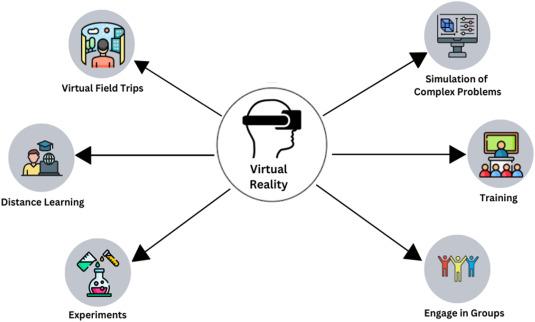How to Overcome Challenges of Integrating VR/AR in Educational Curricula
As technology reshapes classrooms worldwide, the integration of Virtual Reality (VR) and Augmented reality (AR) in educational curricula holds tremendous promise.These immersive learning tools offer dynamic, interactive experiences that can deepen understanding and engagement among students. Though, implementing VR and AR in schools is not without its hurdles. This guide explores the most common challenges educators face and offers practical, actionable solutions to help you successfully integrate VR/AR into your teaching strategies.
Benefits of Integrating VR/AR in Education
- Enhanced Engagement: Immersive learning boosts student motivation and participation.
- Improved Comprehension: Visualizing complex concepts makes abstract ideas more tangible.
- Safe Learning Environments: Simulate hazardous experiments or ancient events without any risk.
- Personalized Learning: Adapt experiences to individual students’ needs and learning speeds.
- Collaboration: Manny VR/AR applications support group projects and teamwork, fostering dialog skills.
Main Challenges of Integrating VR/AR in Educational Curricula
Despite its advantages, adopting virtual and augmented reality in education comes with several barriers:
- High Costs: VR/AR hardware, software, and content development require significant investment.
- Technical Limitations: Issues such as device compatibility, performance, and infrastructure can hinder usability.
- Lack of Training: Many educators have limited experience with immersive technology.
- Curriculum Alignment: Integrating VR/AR seamlessly with existing learning objectives is frequently enough challenging.
- Equity and Accessibility: Ensuring all students have equal access to technology and content is essential.
- Content Quality: There is a shortage of high-quality, curriculum-aligned VR/AR educational materials.
- Health and Safety Concerns: Prolonged use and age-appropriate content must be considered.
Practical Strategies to Overcome Integration Challenges
With careful planning and the right strategies,you can smooth the path to prosperous VR/AR implementation in your classroom.
1. Budget-Friendly Implementation
- Start Small: Pilot a few VR/AR activities before scaling up to identify what works.
- Seek Grants and Funding: many organizations offer grants for educational technology integration.
- Leverage Affordable Devices: Use Google Cardboard and compatible smartphones as cost-effective VR solutions.
- Partner with EdTech Companies: Collaborate for discounts or early access to educational content.
2. Build Technical Readiness
- Upgrade Infrastructure: Ensure reliable Wi-Fi, adequate bandwidth, and device compatibility.
- Technical Support: Have IT experts available and invest in training sessions for both teachers and students.
- Choose Scalable Solutions: Opt for platforms that offer regular updates and support for multiple devices.
3. Effective Teacher Training
- Professional Development: Organize workshops, webinars, and continuous learning opportunities.
- Peer Knowledge Sharing: Encourage collaboration and mentorship among tech-savvy and novice teachers.
- Hands-on Experience: Allow educators to explore VR/AR tools before using them with students.
4. Align VR/AR with Learning Objectives
- Curriculum Mapping: Identify goals and subjects that benefit most from immersive experiences.
- Co-Create Lesson Plans: Integrate VR/AR into existing teaching frameworks and learning standards.
- Use Assessment Tools: Track student progress and adjust content for maximum impact.
5. Ensure Accessibility and Equity
- Device Sharing Models: Rotate equipment or introduce VR/AR experiences in group activities to maximize access.
- Inclusive Content: Prioritize VR/AR resources that are ADA compliant and support various learning needs.
- Community Partnerships: Work with local organizations and libraries to support disadvantaged students.
6. Monitor Health and Safety
- Time Limits: Set strict guidelines for VR/AR usage to minimize eye strain and motion sickness.
- Age-Appropriate Applications: Ensure content is suitable for your students as per manufacturer guidelines.
- Feedback Mechanisms: Regularly gather input from students and parents on usability and comfort.
Case Studies: VR/AR Integration Success Stories
1. Immersive History Lessons
A middle school in California integrated VR field trips into their social studies curriculum, allowing students to virtually explore ancient Rome and Egypt. Teachers noted improved test scores and a 30% increase in student engagement. The school’s IT department provided ongoing support and collaborated with developers to customize experiences.
2. Science Lab Safety with AR
In a high school chemistry class in New York, AR overlays guided students through lab safety protocols and experiments. By visualizing potential hazards in real-time, the school reported a significant reduction in lab incidents and greater student confidence during hands-on activities. Teachers participated in summer workshops to master the technology before launch.
First-Hand Experience: An Educator’s Viewpoint
“Initially, I was intimidated by the technology and feared it would be disruptive. But with support from colleagues and step-by-step training, I discovered how VR makes even the most reluctant learners curious and collaborative. The key was starting simple—using Google Expeditions to visit distant ecosystems—before trying more complex simulations. Now, VR/AR is a highlight of my biology classes.”
– Ms. Olivia Ramirez, 10th Grade Biology Teacher
Essential Checklist for Successful VR/AR Integration
- Assess your school’s technological readiness
- Start with pilot programs and scale gradually
- Invest in professional development for teachers
- Align VR/AR activities with curriculum goals
- Prioritize accessibility and include all learners
- Monitor usage and gather continuous feedback
- Stay updated on latest trends and best practices
Conclusion
Integrating VR/AR into educational curricula can transform learning, making it more interactive, engaging, and effective. While there are significant challenges—budget constraints, lack of training, and concerns over access—the benefits are vast and increasingly accessible.By following best practices, investing in teacher readiness, and focusing on equitable solutions, educators can unlock the full potential of virtual and augmented reality technologies. Equip your school for the future; with patience and careful planning, the virtual classroom is within reach for teachers and students everywhere.

